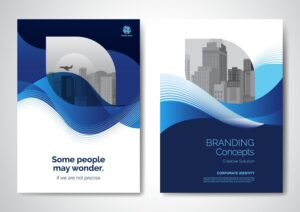Why Readability Matters in Blog Writing
When it comes to content marketing, readability in blog writing is just as important as the information itself. If your content is difficult to read, even the most valuable insights will be ignored. In today’s fast-paced digital world, readers scan blogs quickly, and poorly structured writing can drive them away. Improving readability ensures your audience stays engaged, understands your message, and takes the desired action.
Key Elements That Enhance Readability
1. Keep Sentences and Paragraphs Short
Readers prefer blogs that are easy to digest. Long sentences with complex words can overwhelm them. Aim for sentences under 20 words and paragraphs of 2–3 lines. This makes blog writing more approachable and engaging.
2. Use Subheadings to Structure Content
Breaking down your blog into sections with H2 and H3 headings improves scannability. Subheadings act as signposts, guiding readers through your content. For example, this very blog demonstrates how subheadings can improve readability.
3. Write in a Conversational Tone
The best way to connect with readers is through a friendly, conversational style. Avoid jargon unless necessary and explain terms in simple language. The tone of your blog writing should make readers feel like they’re having a natural conversation with you.
Formatting Techniques for Readable Blogs
Use Bullet Points and Lists
Bullet points help highlight key ideas without overwhelming readers. For example:
-
Short sentences keep readers engaged
-
Subheadings break down complex topics
-
Bullet points improve visual structure
Choose the Right Font and Spacing
Readability isn’t only about writing; it’s also about design. Ensure your blog uses a clean font, proper line spacing, and sufficient white space. These elements make reading effortless and inviting.

SEO and Readability: A Perfect Match
Improving readability in blog writing doesn’t only benefit readers—it also boosts SEO performance. Search engines reward well-structured, easy-to-read content because it reduces bounce rates and improves user engagement.
Here are a few SEO-friendly readability practices:
-
Include your primary keywords naturally in headings and throughout the content.
-
Use internal links like Digitor Contact to guide users toward valuable actions.
-
Add relevant external links to authoritative Indian sources such as YourStory for credibility.
By balancing keyword usage (5–6 times) with clarity, you ensure that your blog appeals to both readers and search engines.
Practical Tools to Check Readability
You don’t have to guess whether your content is readable. Tools like Hemingway Editor, Grammarly, and Yoast SEO can analyze your blog writing for sentence complexity, passive voice, and overall readability scores. These tools help refine your work before publishing.
Tips to Keep Readers Engaged
Add Visuals and Examples
Images, infographics, and real-world examples enhance reader engagement. Visuals break up large chunks of text, making the content easier to follow.
Include Clear CTAs
Readable content should naturally lead readers to take the next step. Whether it’s subscribing to your newsletter or contacting your team, a well-placed call-to-action keeps the audience engaged.
Conclusion
Improving readability in blog writing is about making your content clear, accessible, and enjoyable. By keeping sentences short, using headings, applying simple formatting, and focusing on SEO best practices, you can ensure your content resonates with readers while ranking higher in search engines.
If you want expert assistance in creating engaging, high-quality blogs tailored for your business, connect with Digitor today. With the right strategies, your content can be both readable and impactful.
Explore more related articles to deepen your understanding
Best Fonts for Branding: Create a Lasting Visual Identity
SEO Content Writing: A Complete Guide for BeginnersDoes Google use Cloudflare
Content Writing Basics: A Beginner’s Guide to Effective Writing







